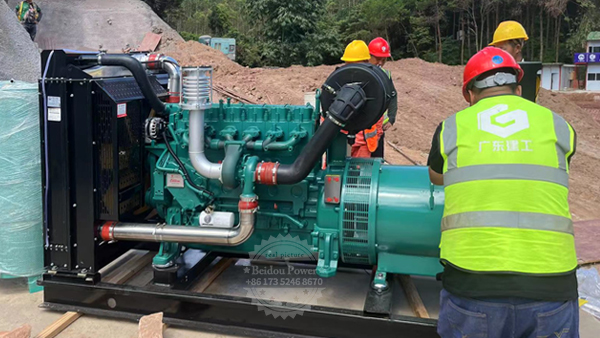The basic working principle of diesel engine is that diesel fuel is injected into the cylinder and burns rapidly, forming high temperature and high pressure gas, pushing the piston to move down, and driving the crankshaft through the connecting rod, so that the heat energy is converted into mechanical energy.
In order to make the diesel engine can work continuously, when the piston moves up and down in the cylinder, it must be able to break the four processes of intake, intercontraction, work and exhaust. Together these four processes are called the working cycle of a diesel engine. A diesel engine whose working cycle is completed in four strokes of the piston board (crankshaft rotation) is called four-stroke diesel. The role and mutual relationship of the above components are: the intake valve is used to suck in fresh air; The exhaust valve is used to remove the burned exhaust gas of the cylinder. The injector is used to inject diesel fuel into the cylinder to burn the cylinder head, piston and cylinder liner. One end (small head) is connected with the piston, the other end (big head) is connected with the curved uranium, and the flywheel is fixed on the crankshaft for the shop. When the gas in the combustion chamber burns and expands, the side makes the y5 flash move down, and the sleeve is rotated by the connecting rod, and vice versa. Using the inertia force of the crankshaft and flywheel rotating together, it is also possible to push the piston up and down through the connecting rod. In this way, the -K and lower reciprocating motion of the piston constitute the basic conditions for the working cycle of the diesel engine.
When the diesel engine is working, the piston is moved to the top of the cylinder, which is called -L stop; Move to the bottom of the cylinder at position 2, called bottom dead center. The distance between the top and bottom dead center is called the piston stroke (also known as stroke). One stroke of the piston is equal to 1: twice the radius of rotation of the crankshaft. For every stroke the piston moves, bend the riveting for half a cycle.
When the piston is at TDC, the cylinder volume above the top of the piston is called the combustion chamber volume. When the piston is at BDC, the cylinder volume above the top of the piston is called the total cylinder volume. The total volume of the cylinder is the value obtained by the combustion chamber volume, called the compression ratio, which indicates the degree to which the gas is compressed in the cylinder. The greater the compression ratio, the more severely the gas is compressed in the cylinder.
Post time: Jul-16-2024

